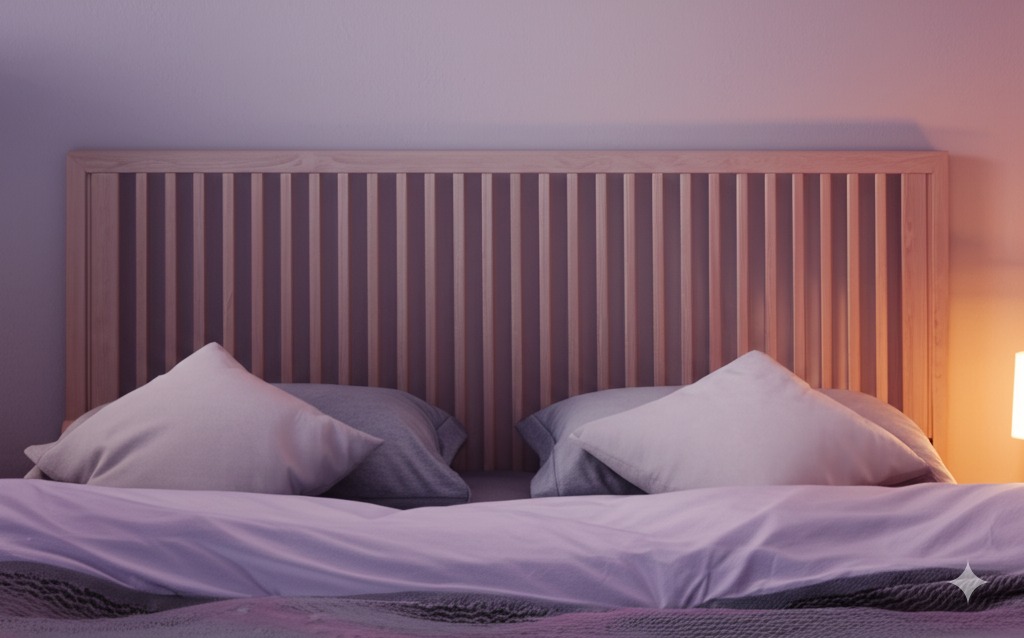Creating the Ultimate Sleep Sanctuary: Optimizing Your Bedroom Environment

Your bedroom should be a haven for rest and relaxation, a true sleep sanctuary. Yet, often our bedrooms become multi-purpose rooms filled with distractions that hinder sleep. Optimizing your bedroom environment is a fundamental aspect of good sleep hygiene and can significantly improve your ability to fall asleep quickly and stay asleep through the night.
Think of your bedroom environment in terms of sensory input: light, sound, temperature, and even touch and smell. Controlling these elements can create powerful cues for your brain that it's time for sleep.
Embrace the Darkness
Light, especially blue light, is the most powerful signal to your brain that it's time to be awake. Even small amounts of light can suppress melatonin production.
- Blackout Curtains/Blinds: Invest in window coverings that effectively block outside light from streetlamps or early morning sun.
- Cover Electronics: Use electrical tape or dimming stickers to cover small LED lights on chargers, TVs, clocks, or other devices. Even tiny lights can be disruptive.
- Remove Screens: Ideally, keep TVs, computers, tablets, and smartphones out of the bedroom entirely. If not possible, ensure they are completely off (not just in standby) at night.
- Use an Eye Mask: A comfortable eye mask is a great backup if you can't eliminate all light sources.
Create a Quiet Zone
Noise is a common sleep disruptor, whether it's traffic, neighbors, a snoring partner, or household sounds.
- Earplugs: A simple and effective solution for blocking out various noises.
- White Noise Machine/App: Creates a consistent, soothing soundscape that can mask sudden, jarring noises. Fans can also serve this purpose.
- Soundproofing: Consider adding rugs, heavy curtains, or even acoustic panels if external noise is a significant issue.
- Address Snoring: If a partner's snoring is the problem, encourage them to see a doctor to rule out sleep apnea. Positional therapy or anti-snoring devices might help.
Keep it Cool and Comfortable
Your body temperature naturally drops slightly as you prepare for sleep. A cool room facilitates this process.
- Ideal Temperature: Most experts recommend a bedroom temperature between 60-67 degrees Fahrenheit (15-19 degrees Celsius) for optimal sleep.
- Breathable Bedding: Choose sheets and blankets made from natural, breathable materials like cotton, linen, or bamboo.
- Comfortable Mattress and Pillows: Ensure your mattress provides adequate support and your pillows suit your sleeping position. Replace them when they become worn out.
- Ventilation: Ensure good airflow in the room, perhaps by opening a window slightly (if safe and quiet) or using a fan.
Declutter and Create Calm
A cluttered or stimulating bedroom environment can contribute to a cluttered and active mind.
- Minimize Clutter: Keep surfaces clear and avoid using the bedroom as a storage area or office.
- Soothing Colors: Opt for calm, muted colors for walls and decor.
- Relaxing Scents (Optional): Some find scents like lavender or chamomile calming (use diffusers or pillow sprays sparingly).
- Bedroom for Sleep Only: Reinforce the association between your bed and sleep (and intimacy) by avoiding work, stressful conversations, or screen time in bed.
Consistency is Crucial
Creating a sleep sanctuary isn't just about a one-time setup. Maintaining these conditions consistently helps reinforce the signals to your brain that the bedroom is a place for rest.
Transforming your bedroom into a sleep sanctuary is a powerful step towards improving your sleep quality. By controlling light, sound, temperature, and creating a calm, uncluttered atmosphere, you provide your body and mind with the ideal environment to wind down and achieve restorative sleep night after night.



